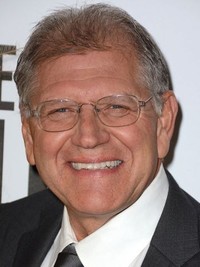Robert Zemeckis

Filmmaker Robert Zemeckis created popular fare, frequently using the latest technology, that left an indelible mark on the entertainment industry. A native of Chicago, he attended the famed film program at the University of Southern California. He teamed with fellow USC alum Bob Gale for the script for his feature directorial debut, the Beatlesmania comedy, "I Wanna Hold Your Hand" (1978). His work in college had brought him to the attention of director Steven Spielberg, who took Zemeckis under his wing. Working with Gale again, who would become his frequent partner, he provided the script for Spielberg's World War II comedy, "1941" (1979). He directed another comedy, the Kurt Russell vehicle "Used Cars" (1980), before finding significant commercial success with "Romancing the Stone" (1984), starring Michael Douglas and Kathleen Turner. His next effort, "Back to the Future" (1985), moved Zemeckis into the blockbuster territory. The story of a time-traveling teenager played by Michael J. Fox became a phenomenon and spawned a pair of sequels. He blended live action and animation, he created another cultural touchstone with "Who Framed Roger Rabbit" (1988), a film that brought together the characters from both the vaunted Warner Bros. and Disney cartoon canon. After a decade dominated by the "Back to the Future" franchise, Zemeckis managed to hit upon a film that was technologically innovative and had critically appeal. "Forrest Gump" (1994), starring Tom Hanks, went on to claim Oscars for both its director and star. While largely working in film, the director did make occasional forays into television, most notably directing multiple episodes of the popular horror anthology, "Tales From the Crypt" (HBO, 1989-96). He continued to work with some of Hollywood's biggest names, directing Jodie Foster in "Contact" (1997) and Harrison Ford in "What Lies Beneath" (2000). He circled back to reteam with Hanks on "Cast Away" (2000), in addition to the motion-capture holiday film "The Polar Express" (2004). That particular technology became an obsession for the director as he formed the production company ImageMovers and struck a deal with Disney. He used it exclusively for his next two features, "Beowulf" (2007) and "A Christmas Carol" (2009). He moved back into the live action world, albeit with some showy special effects, for "Flight" (2012) starring Denzel Washington. He never stopped going for stunning visuals, which continued with "The Walk" (2015), about Phillipe Petit's high-wire cross of the World Trade Center, and "Allied" (2016) with Brad Pitt. Zemeckis returned to motion-capture, this time mixing it with live action, when he directed Steve Carell in "Welcome to Marwen" (2018), about the victim of a brutal attack who uses a fantasy world to deal with his PTSD.